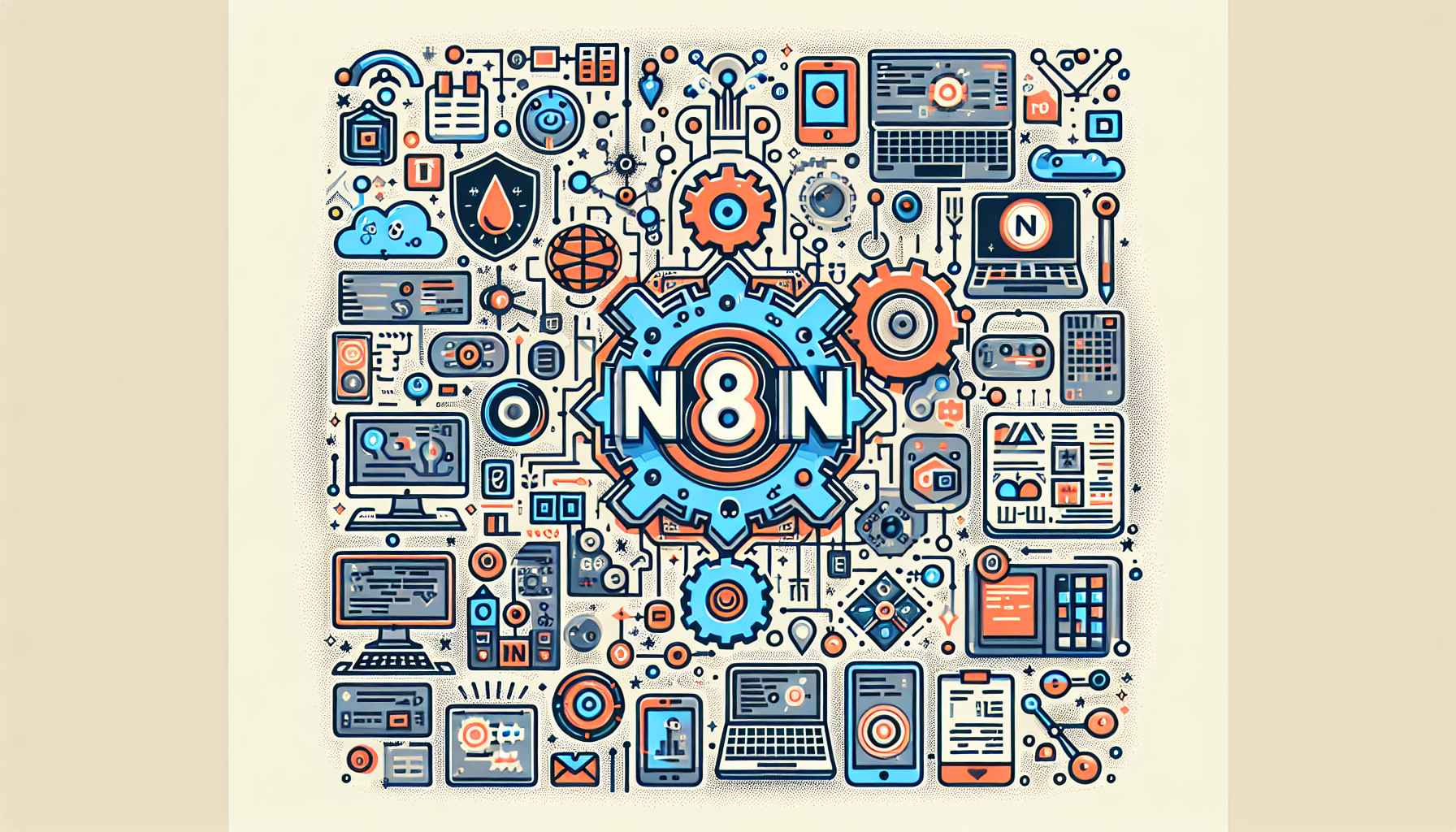What is N8N?
N8N is an open-source workflow automation tool designed to automate repetitive tasks and integrate various applications and services without writing extensive code. It empowers users and developers alike with a visual interface for creating complex workflows, allowing for greater efficiency and productivity in managing routine tasks.
Key Features of N8N
-
Visual Workflow Editor: N8N provides a user-friendly interface that allows users to create workflows by connecting nodes. This makes it accessible to non-developers while still providing enough complexity for advanced users.
-
Node-Based Architecture: N8N operates using nodes, each representing a specific task or action—such as sending an email, querying a database, or processing data. Users create workflows by connecting these nodes logically.
-
Extensive Integrations: It supports over 200 built-in integrations with popular services like Slack, Google Sheets, Trello, and more. With N8N’s API, users can create custom integrations for any application that offers an API.
-
Conditional Logic: Users can implement conditional workflows, allowing for specific actions to be executed based on dynamic data and conditions. This feature enhances the versatility of automation processes.
-
Self-Hosted or Cloud Options: N8N can be self-hosted, giving users complete control over their data and workflows. Alternatively, an N8N cloud version is available for users who prefer a managed solution.
-
Custom Code Integration: For developers looking to extend N8N’s capabilities, there is an option to write custom JavaScript code directly within workflows. This enables the customization of actions and the implementation of specific business logic.
-
Webhooks Support: N8N supports webhooks, allowing external applications to trigger workflows in real-time. This is essential for responding to events from other platforms promptly.
Setting Up N8N
N8N can be installed through various methods depending on your preferred environment. Options include Docker, npm, or running via a managed cloud service. Below are the basic installation steps for Docker:
-
Ensure Docker is Installed: Make sure that Docker and Docker Compose are installed on your machine. This is necessary for running N8N efficiently.
-
Pull the Docker Image: Run the following command to pull the N8N Docker image:
docker pull n8nio/n8n -
Run N8N: Use Docker to start N8N with the following command:
docker run -d -p 5678:5678 n8nio/n8n -
Access the Interface: Open your web browser and navigate to
http://localhost:5678. This will bring you to the N8N interface, where you can begin creating workflows.
Creating Your First Workflow
-
Start a New Workflow: In the N8N interface, click on the “+” icon to create a new workflow.
-
Add Nodes: Select the first node based on the action you want to perform, such as Slack. Authenticate your account to connect with N8N.
-
Configure Node Settings: Fill in the required fields for the node you have chosen, ensuring all relevant parameters are set correctly.
-
Connect Nodes: Drag lines between nodes to establish a connection, defining the workflow sequence. For example, connect a Google Sheets node to a Slack node to send alerts when new data is added.
-
Test the Workflow: N8N allows you to easily execute your workflow in test mode. Monitor the outputs from each node to ensure everything is functioning as intended.
-
Activate Workflow: Finally, once you’ve thoroughly tested your workflow, activate it. N8N will run the workflow based on triggers as you have designed.
Use Cases for N8N
-
E-commerce Automation: Automate order processing, customer notifications, and inventory management by integrating your e-commerce platform with various messaging services and databases.
-
Marketing Campaigns: Automate the collection of leads from forms, update your CRM, and send welcome emails to new subscribers, streamlining your marketing funnels.
-
Social Media Management: Schedule posts, gather analytics, and respond to customer queries efficiently without manual effort.
-
Data Synchronization: Sync data between different SaaS applications to maintain up-to-date records across platforms and reduce manual errors.
Best Practices for N8N Workflows
-
Keep It Simple: Initially, create straightforward workflows to understand how N8N operates. Gradually add complexity as you grow more comfortable.
-
Documentation: Maintain detailed documentation of your workflows to facilitate onboarding for team members and reference for future adjustments.
-
Iterate and Improve: Regularly review workflows to identify areas for optimization, ensuring they remain efficient as business needs evolve.
-
Monitor Performance: Utilize N8N’s built-in log and error handling to monitor workflow performance actively, addressing any issues promptly.
-
Secure Sensitive Data: If using N8N in a production environment, ensure to implement proper security measures, including SSL/TLS for data encryption.
Conclusion
N8N has emerged as a powerful tool for automating workflows and integrating applications. Its flexibility, extensive features, and user-friendly interface make it a great choice for users ranging from small business owners to large enterprises. As more organizations look to enhance operational efficiency, N8N serves as an invaluable resource in the automation landscape.
By leveraging N8N’s capabilities, users can streamline processes, mitigate errors, and ultimately focus more on growth and strategy—unlocking the full potential of automation in modern workflows.


